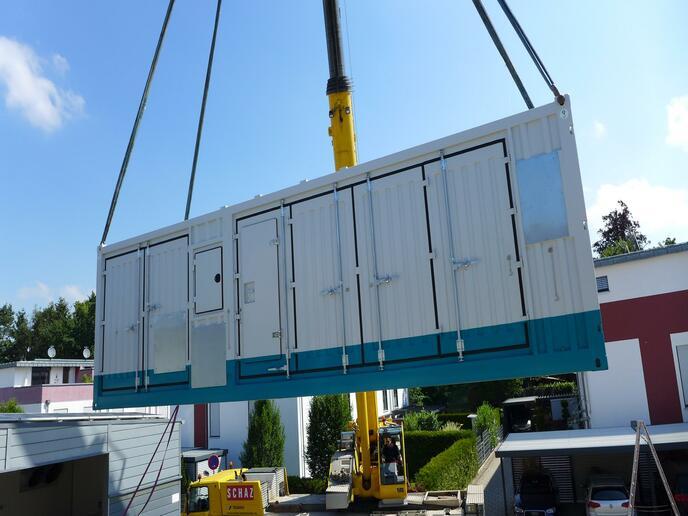Safe and reliable: HySTOC’s promise for the future of hydrogen supply
Hydrogenious LOHC Technologies was founded in 2013 around a groundbreaking discovery: a new hydrogen carrier material potentially beating all existing alternatives. The new material was safe, almost non-flammable, increased storage capacity fivefold and reduced the cost of hydrogen transport by up to 80 %. Five years later, the company received funding under the European Commission’s Fuel Cells and Hydrogen Joint Undertaking. Martin Johannes Schneider, lead product manager and coordinator of the HySTOC (Hydrogen Supply and Transportation using liquid Organic Hydrogen Carriers) project, tells us about the project. He discusses its objectives and expands on plans for its future commercialisation.
What is LOHC technology and how does it work exactly?
Martin Johannes Schneider: Our company is a pioneer and global industry leader in the field of hydrogen storage. We made it this far thanks to patented liquid organic hydrogen carriers (LOHCs) materials, which enable the safe and efficient storage of hydrogen in the form of an easily transportable oil. Our technology completely eliminates the need for pressurised hydrogen tanks. LOHCs can chemically store hydrogen at high storage densities under ambient conditions. Hydrogen storage is done through exothermic catalytic hydrogenation reaction, while the release process is based on an endothermic catalytic dehydrogenation reaction. Hydrogenious LOHC Technologies develops and operates the StorageBOX and ReleaseBOX systems for LOHC-based hydrogen infrastructures.
How does this technology compare to existing storage solutions, both non-LOHCs and LOHCs using other materials?
Our LOHC oil (dibenzyltoluene) is hardly flammable and non-explosive. It makes large-scale hydrogen storage and transport completely safe, whereas other LOHC materials have different characteristics. Toluene for instance has a lower gravimetric hydrogen storage density and a higher flammability. When it comes to non-LOHC options, these mostly revolve around high-pressure and cryogenic hydrogen storage. They require either extreme pressures (500 to 1 000 bar) or extreme temperatures (-253 °C) to store and transport hydrogen. Our LOHC oil is much easier to move around. You can use existing infrastructure for fossil fuels such as trucks, trains and ships.
How far are you in the development process?
The StorageBOX system was successfully built and sent from Germany to Finland. We were also able to develop successful CE-classified systems that have a high potential for standardisation. This allows for rapid market introduction with an increase in the number of systems delivered.
Did you face any difficulties in developing and demonstrating the technology? If so, how did you overcome them?
The environmental conditions in Finland, with temperatures as low as -30 °C, presented us with unknown challenges. Likewise, the integration of new process stages, such as the compression step, has made the design of the plant more complex than we initially thought. We had to factor in explosion protection for instance. The specific requirements of this project have strengthened our technical expertise, especially when it comes to complex and extreme site requirements.
What do you still need to achieve before the end of the project in December?
The coronavirus outbreak has made it impossible to operate the StorageBOX as planned for months. At the very least we hope to successfully commission both plants on-site in Finland and to be able to operate them on a permanent basis by the end of 2020.
What has been the feedback from potential customers so far?
Interest in this type of LOHC system is high. In the first quarter of this year alone, we sent out several offers for identical plants to customers. However, sometimes we have to work with completely different framework conditions for the requested application scenarios at their respective locations. This has an influence on the extent to which follow-up orders can be contracted. Large-scale hydrogen infrastructure projects have shown strong interest and even started to scale up our LOHC systems for the market introduction of StoragePLANTs and ReleasePLANTs, towards multi-ton hydrogen storage and release with LOHC.
Lack of confidence, high cost and limited infrastructure are the most important problems faced by the sector. How do you hope HySTOC will contribute to overcoming these barriers?
HySTOC has taken important steps in the adaptation of LOHC technology to specific market needs, such as high hydrogen quality, high-pressure hydrogen and extreme weather conditions. The StorageBOX and ReleaseBOX systems have become the reference for state-of-the-art systems using LOHC technology. A successful field test will ensure a strong market placement of the technology as well as lay the basis for its further scale-up. Lack of confidence and high cost can only be tackled if large-scale projects become a reality. Hydrogen technologies including LOHC are market-ready from a technological point of view, just like renewable energies were 20 years ago. Public authorities and funding mechanisms like the ETS Innovation Fund and IPCEI, with a specific focus on OPEX funding, will now be required to prevent market failure and rapidly bring hydrogen infrastructure into the market. This will reduce cost through economies of scale.
Keywords
HySTOC, hydrogen storage, hydrogen transport, LOHC, dibenzyltoluene



